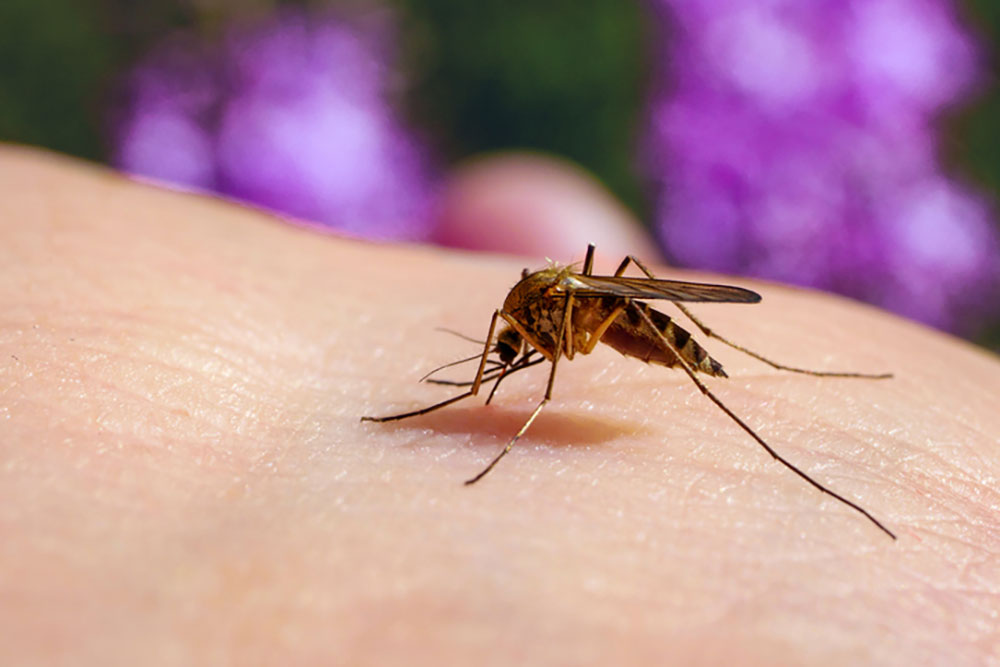
iStock
By Mary Carpenter
A response to a reader’s question: Is malaria spreading in the U.S.?
RECENT REPORTS of seven malaria cases in the U.S. sound like a small number—but what’s important is the description “locally acquired,” meaning that local mosquitos in Texas and Florida are carrying a parasite that had not been seen in the U.S. since 2003. In addition, the cases diagnosed in the past two months appear unrelated to each other.
Anopheles mosquito vectors found “throughout many regions of the country are capable of transmitting malaria if they feed on a malaria-infected person,” according to the CDC’s recent “Health Advisory” that warns in bold print: “Malaria is a medical emergency.” The advisory directs clinicians to “consider a malaria diagnosis in any person with a fever of unknown origin”—specifically noting “regardless of their travel history.”
More likely in the Northeast, however, the West Nile virus is “the most important mosquito-borne disease in North America,” according to Connecticut Agricultural Experiment Station mosquito expert Dr. Theodore Andreadis. Most people infected with West Nile have either no symptoms or mild flu-like fatigue and aching, but risk of severe disease increases with age: each year in the U.S. more than 1,000 people develop inflammation of nervous system tissues that can lead to encephalitis or meningitis.
Washington DC ranks number four on the 2022 Top Mosquito Cities list kept by Orkin, the pest control company. The highest numbers of West Nile cases occur in major urban areas —Los Angeles, Chicago and Dallas-Fort Worth — although the Great Plains states (North and South Dakota, Wyoming and Colorado) have the highest rates. According to Climate.gov, the “largest identified single outbreak” in U.S. history occurred in Arizona in the summer of 2021 — traced to a “wetter-than average monsoonal season.”
Two other mosquito-borne viruses —reported, though rare, in the Northeast —with names that reflect their symptoms of severe joint and muscle pain: Dengue fever, with the nickname “breakbone fever;” and chikungunya, from an African word meaning “to be contorted,” according to the Washington Post. The Aedes mosquitos carrying these viruses “love living around humans” and —though more prevalent in U.S. territories, notably in Puerto Rica, and elsewhere in the world —have made recent gains in Southern California, “infuriating the region’s residents.”
(The deadliest but very rare mosquito-borne virus in the U.S. is Eastern equine encephalitis (EEE), which occurs mostly in rural areas close to freshwater swamps. The virus causes death in about 30% of cases, and permanent neurological damage in around 70% of those who survive the infection.)
The Asian tiger mosquito (ATM), however, “can become the single most important pest species once it gets established,” according to Amdro pest services. Another species of Aedes, the ATM —with its distinctive white stripes, including one down the middle of the back on a black body—is a silent, aggressive human biter that bites during the daytime. The resulting flattish, blister-like spot can have a red halo that spreads outwards, and it feels hot, itchy and painful. For some people, both the itching sensation that usually subsides rapidly can reactivate with changes in temperature, such as after a hot shower, and the intense pain can persist for several days.
In the eastern U.S., Asian tiger mosquitos are carrying West Nile virus but have not yet caused proven disease. More worrisome, they are potential vectors for other arboviruses—viruses caused by mosquitos and ticks—including EEE, chikungunya and Zika. The expanding range of Aedes may be the result of climate change, related to changes in temperature and precipitation.
Malaria, however, could be the most worrisome mosquito-borne disease in the U.S.: Without early diagnosis and treatment, it can progress to severe disease or death. Symptoms include chills, headache, myalgias and fatigue that can begin anywhere from 10 days to four weeks after infection. Every year in the U.S., of some 2,000 cases of “mostly travel-related malaria,” about 300 people develop severe disease, and five to ten die. (Malaria can also be transmitted from mother to fetus or neonate and through blood transfusion and unsafe needle-sharing practices.)
For mosquito-borne disease, the main advice is to seek treatment for unexplained or enduring symptoms, especially fever. Otherwise, make efforts to avoid mosquito bites that include wearing light-colored, loose clothing and using mosquito repellent —to protect against all mosquito species, these would be necessary day and night.
Regardless of protective measures, some people are more likely than others to attract biting mosquitoes—notably those with Type O blood, who seem particularly enticing to the Asian tiger mosquito. And mosquitoes seem to like body heat as well as sweat, because it contains lactic acid and ammonia—raising the risk of bites following exercise; and carbon dioxide, which increases with greater exhales—both during exercise and for larger people.
Also, mosquitoes appear drawn to people who have eaten sweet, salty or spicy foods, as well as those high in potassium, notably bananas. And the bugs gravitate toward people in green and black clothing, rather than those wearing white and gray—maybe because darker colors are easier for them to see. Finally, mosquitoes may head for forearms, ankles and feet, likely because the skin in these areas can have higher levels of bacterial growth.
A female mosquito’s bite —labeled a “blood meal” because the blood provides nutrients the mosquito needs —leaves behind saliva that can spread a multitude of infections. The Washington Post calls the mosquito “the deadliest animal in the world…smaller than a pencil eraser and weighs around two-thousandths of a gram — less than the weight of a single raindrop.”
—Mary Carpenter regularly reports on topical subjects in health and medicine.
